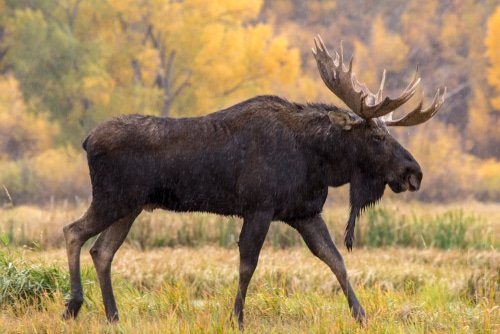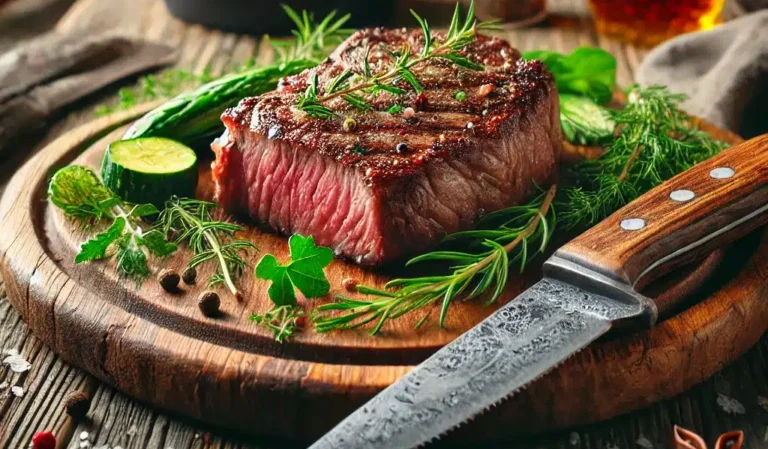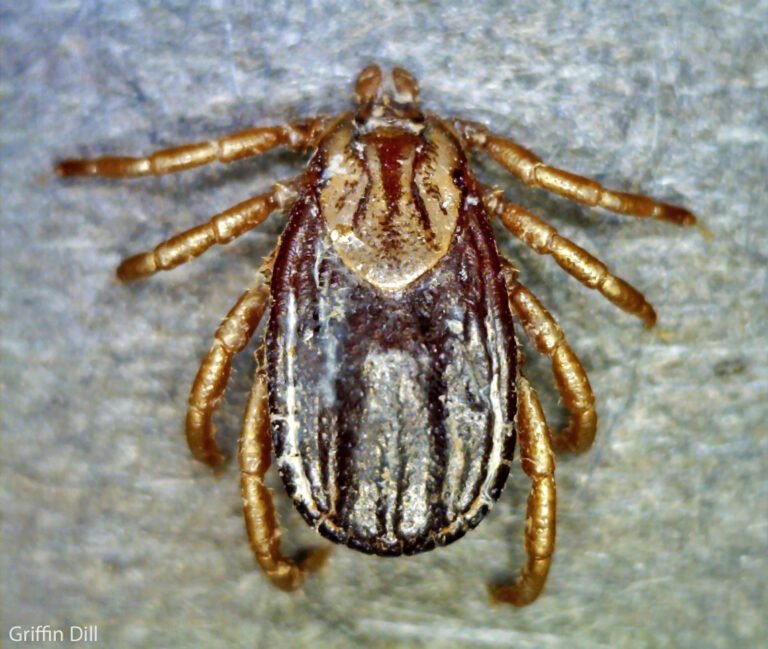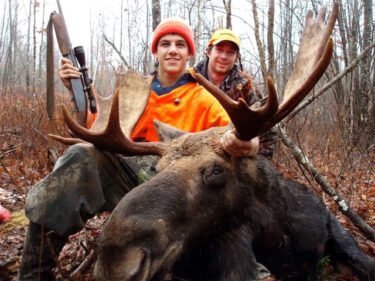The moose undoubtedly comes to mind when you think of majestic creatures roaming the wilderness. These gentle giants are captivating animals with their enormous antlers and distinctive snouts. In this blog, we’ll discuss moose feeding habits and their herbivore tendencies.
They have a purely vegetarian diet, munching on various plants and shrubs in their natural habitats. Moose belong to the family of deer species known as Cervidae and are the largest members of this family.
They primarily feed on vegetation, making them true herbivorous browsers. Their impressive size demands an equally impressive amount of food intake to sustain themselves.
Importance of Understanding Their Feeding Habits for Conservation Efforts
To protect these magnificent creatures and their delicate ecosystems effectively, it is imperative to understand their feeding habits thoroughly. Knowledge about what moose eat in the wild allows conservationists and wildlife biologists to implement effective management strategies for moose populations.
Understanding moose feeding habits helps scientists ascertain the availability and abundance of food sources within their habitats. This information becomes crucial in monitoring ecosystem health and identifying potential threats or imbalances that may impact moose populations negatively.
Additionally, studying moose dietary patterns aids in comprehending their ecological role as “ecosystem engineers.” By selectively browsing certain plants over others, moose shape the composition and structure of plant communities within their habitat. This understanding helps researchers recognize the intricate connections between herbivore populations and plant diversity.
By delving into the fascinating world of what these giant herbivores consume daily, we can gain insights into how they interact with nature. So, let’s embark on a journey through the marvels of a moose’s diet!
General Moose Diet
Preference for browsing on shrubs, twigs, and leaves
When it comes to their diet, moose are truly herbivorous connoisseurs. These majestic creatures strongly prefer browsing a variety of shrubs, twigs, and leaves found in their natural habitat. They delicately nibble on the tender shoots of woody vegetation such as willow, birch, and aspen trees, which provide them with essential nutrients.
Moose also has a voracious appetite for various shrubs, like blueberry bushes and mountain ash plants. It’s fascinating how they use their dexterous lips to carefully pluck leaves from branches or strip the bark off twigs for tasty morsels.
Seasonal variations in diet due to the availability of food sources
Moose dining preferences change throughout the seasons as they adapt to the availability of different food sources. During springtime feasts, when nature rejuvenates after a long winter slumber, moose indulge in young, supple vegetation rich in nutrients. After months of surviving on limited resources, they have an essential energy boost.
As summer arrives with its bountiful harvest of greenery, moose expand their menu options by devouring an assortment of herbs and grasses that thrive during this season. However, come winter’s icy grip, moose face more challenging times when food is scarce.
They consume woody browse such as pine needles or even the less tasty bark from trees to keep themselves nourished through the cold months. Now that we’ve explored the general aspects of moose diet, let’s delve deeper into their preferred food sources and unique adaptations for feeding.
Preferred Food Sources
Aquatic plants: Explanation of moose’s affinity for water plants like pondweed and water lilies
When it comes to what moose eat in the wild, one cannot overlook their love for aquatic plants. These gentle giants have a peculiar fondness for munching on delicious water-dwelling vegetation.
You might find them gracefully wading through shallow ponds, their elegant snouts submerged as they gobble up pondweed and water lilies with gusto. The moist environment provides them with a refreshing change from the dense forests they usually inhabit, and these underwater delicacies are high in nutrients, making them an irresistible treat for moose.
Woody vegetation: Discussion on moose’s fondness for consuming willow, birch, and aspen trees
Now, let’s turn our attention to the woody delights that comprise a significant portion of the moose diet. These majestic creatures have an uncanny knack for identifying and devouring certain tree species with sheer delight. Willow trees seem to be at the top of their menu, offering tender twigs and leaves that are tasty and packed with essential nutrition.
Moose also has a soft spot for birch trees; their peeling bark and sweet sap enhance their dining experience. And let’s not forget about aspen trees—their succulent leaves make perfect bite-sized snacks for these herbivorous giants.
Regarding preferred food sources in the moose diet, aquatic plants and woody vegetation play vital roles in sustaining this species’ dietary needs. Whether indulging in the delights of underwater foliage or sampling nature’s arboreal offerings, moose exhibit a keen sense of culinary preference that shapes their feeding habits in captivating ways.
Unique Adaptations for Feeding
Specialized teeth: Elaboration on the structure and function of moose’s large incisors and molars
When chowing down on their favorite leafy delights, moose have some serious dental artillery. Their mouths are equipped with remarkable teeth perfectly designed for masticating vegetation.
At the front, they boast large, flat incisors that act like pruning shears, slicing through twigs and stems precisely. These incisors are ideal for nibbling on tender shoots and stripping leaves off branches.
We encounter their hefty molars as we venture into the moose’s mouth. These bad boys feature rough ridges that facilitate grinding tough plant material, ensuring maximum nutrient extraction from fibrous vegetation that makes up a significant part of their diet.
Long legs and neck: Explanation of how these physical features aid in reaching high branches or underwater plants
Moose have truly mastered the art of reaching new dining heights thanks to their long legs and necks. These majestic creatures often crave the delectable delicacies nestled atop lofty branches.
With legs longer than a supermodel’s runway strut, they effortlessly navigate through thick forests and dense vegetation to access those tantalizing treats others can imagine. But it doesn’t stop there!
Moose also possess elongated necks that serve as extendable “forklifts” when snacking on elevated foliage. Their flexible neck muscles stretch upwards easily, allowing them to enjoy sumptuous leafy bites high above ground level.
With these unique adaptations in play, moose satiate their hunger and shape the ecosystems they inhabit by influencing vegetation growth patterns through selective browsing. So next time you spot one of these magnificent creatures munching away in a serene forest, take a moment to appreciate the extraordinary dental and anatomical features that enable them to indulge in their delectable moose diet.

Foraging Techniques
Selective browsing: Choosing the Best Morsels
When it comes to dining, moose possess a discerning palate. They are no mere gluttons gobbling up everything in sight! Instead, these majestic creatures engage in selective browsing, carefully assessing and choosing the most delectable parts of plants to savor.
Armed with their keen senses of smell and taste, moose can differentiate between plant species and various parts of the same plant. They methodically nibble on tender young shoots, deeming them the creme de la creme of foliage.
From twigs to leaves to succulent buds, moose have mastered finding the choicest greens amidst a sea of otherwise ordinary vegetation. It’s like having a gourmet chef preparing their meal!
Underwater Feeding: A Dive into Deliciousness
Did you know that moose are not just terrestrial grazers? Oh no!
These incredible creatures are quite adept at underwater adventures, too. It’s like they have an inner Jacques Cousteau yearning for aquatic cuisine!
Moose can dive underwater and feast upon the aquatic vegetation that thrives beneath the surface. With their long legs and strong bodies acting as natural flotation devices, they gracefully submerge themselves into lakes or ponds in search of submerged plants like pondweed or water lilies.
It’s truly mesmerizing to witness these gentle giants easily navigating beneath the water’s surface, snacking on a buffet only accessible to those willing to take the plunge. So there you have it–moose aren’t just picky eaters; they’re connoisseurs of fine flora!
From selecting only the most delicious parts of plants through selective browsing to taking gastronomic deep-sea dives for underwater delicacies, these magnificent herbivores never fail to impress with their dining habits. No wonder they have such a diverse and fascinating diet in the wild!
Seasonal Variations in Feeding Behavior
Springtime Feasting: Nourishment after a Long Winter
After enduring a chilly winter, moose emerge from their snowy hideaways with voracious appetites. Springtime is a period of replenishment for these magnificent creatures as they seek out the tender shoots and leaves that sprout with the arrival of warmer weather. The importance of this season cannot be overstated, as moose need to regain their strength and replenish depleted fat reserves.
With an insatiable desire for nutrient-rich food, they eagerly feast on young willow branches, birch foliage, and even the occasional aquatic vegetation. This rejuvenating feast ensures that moose are equipped to face the challenges that lie ahead.
Summer Grazing Patterns: Adapting to Abundant Vegetation
As summer blankets the wilderness with its verdant splendor, moose adapt their diet to take advantage of the abundance around them. This season offers an array of delectable options for our antlered friends. They graze upon grasses, sedges, and various herbaceous plants that flourish during this time.
Additionally, succulent water lilies and pondweed become tempting morsels for those who venture near streams or marshy areas. With an extensive buffet available at every turn, moose leisurely browse through meadows and marshlands without worrying about scarcity.
Winter Challenges: Coping with Limited Food Options
When winter’s icy grip tightens its hold on the land, moose face a daunting challenge – finding sufficient food amidst frozen landscapes. Their preferred menu shrinks considerably as temperatures plummet and snow blankets everything in sight. The woody vegetation they rely on becomes scarce as trees shed their leaves or become inaccessible beneath layers of snow.
Moose must consume bark, twigs, and the occasional conifer needles to sustain themselves. These meager winter offerings hardly match the nutrient-rich diet of warmer months, forcing moose to rely on their fat reserves and slow their metabolism to conserve energy.
It’s a true testament to their resilience and adaptability in the face of harsh conditions. Whether it’s the bountiful spread of summer or the challenging scarcity of winter, moose continually adjust their feeding behavior to survive.
Their evolutionarily honed instincts guide them through each season, ensuring they find sustenance even in unforgiving environments. Understanding these seasonal variations in feeding habits provides insights into what moose eat in the wild and helps conservationists protect this majestic species for generations to come.
Impact on Ecosystems
Role as Ecosystem Engineers: Shaping Nature’s Canvas
When it comes to shaping their environment, moose are nature’s artists. Through selective browsing, they play a crucial role in determining the composition and structure of forests and wetlands. As these magnificent herbivores feast on certain plant species, they inadvertently create openings in the forest canopy, allowing more sunlight to reach the forest floor.
This change in light conditions encourages the growth of understory plants that wouldn’t otherwise thrive. Moreover, removing specific plant species by moose also affects the abundance and diversity of other organisms within these habitats.
Interactions with Other Species: A Web of Connections
Moose are not isolated; they are an integral part of interconnected ecosystems. Their feeding habits have far-reaching implications for many other species that depend on similar resources.
For instance, as moose consume large quantities of woody vegetation like willows and birches, they create ideal habitats for certain bird species that rely on these trees for nesting or foraging insects amongst their branches. Similarly, by altering plant communities through their browsing preferences, moose indirectly influence populations of smaller mammals and insects that depend on specific plants for food or shelter.
Conclusion
In analyzing moose feeding habits and their impact on ecosystems, it becomes evident that these majestic creatures are true ecological orchestrators. Through selective browsing and unintentional environmental modifications caused by their dietary preferences, moose shape landscapes and foster diverse habitats for numerous species to thrive.
Understanding the intricacies of moose diets allows us to appreciate how this seemingly simple act plays a vital role in maintaining biodiversity within our natural world. So, let us marvel at the wonders of nature’s interconnectedness, cherishing every nibble that a moose takes as a brushstroke upon nature’s grand canvas.







Hey there! Do you know if they make any plugins to assist with SEO?
I’m trying to get my website to rank for some targeted keywords but I’m not seeing very good results.
If you know of any please share. Thanks! You can read similar text here:
Eco blankets
It permits people to break free from societal norms and specific their unique aesthetic.
Can you be more specific about the content of your article? After reading it, I still have some doubts. Hope you can help me.